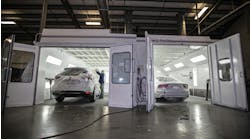As a business owner, you may be struggling with the role that safety should play in your day-to-day operations. By “safety,” I am referring to proactive measures you take as a manager to reduce the possibility of your employees getting hurt or killed at work. There is a spectrum of responses to that question, ranging from doing nothing to pushing for an overhaul of your company’s safety culture. The fact that you are reading this article is an indicator that you want to change the way you’ve approached this question in the past, and you recognize that your biggest challenge could be getting your employees on side with the changes.
Experience tells us that safety is often a tough sell. We should ask ourselves why this is so. Aren’t the benefits of safe work practice self-evident? For many of us, it seems as though the rewards aren’t a sufficiently compelling story. We remain convinced that safety will cost us more than we gain, and thus we hesitate to disrupt the status quo. Your employees are no different. Their skepticism will often be founded on an assumption that safety only serves to slow them down and will never directly benefit them.
Time to do some soul-searching. What was it that convinced you that changes need to be made in the way your company approaches safety? It could very well be that your insurance carrier had a big influence on this decision, and if this is the case, there is no need to apologize. The reality is that the majority of business professionals have decided to work safely because it is proven too costly to do otherwise. Your employees will be no different.
To nourish the safety culture of your business, your employees must believe that they are better off when they choose to work safely. You can enact rules and consequences that are intended to change their behavior, but what will they do if they think nobody's looking? If the worker isn’t convinced that they will benefit from following the rules, they are just as likely to break them when they are left on their own. So how do you convince the skeptics that safety does, indeed, pay off? This can be accomplished by engaging, equipping, and partnering with your employees on how safety is implemented in your business.
Engage
The first step is to engage your employees by providing them with relevant safety information. Start with this critical piece of data - 80% of workplace injuries are caused by unsafe acts, as opposed to unsafe conditions. While some of these injuries take place due to ignorance (perhaps a lack of training), the majority happen when workers who know better, choose to act in an unsafe manner. This fact sets the tone of the conversation, because it establishes the role that personal responsibility plays in workplace safety.
I would suggest that an employee is in business the same way as their employer. Both parties are trying to maximize their revenues and minimize their expenses. Having said that, the reason that many workers don’t take safety seriously is because they have not taken into account what an injury could cost them. These costs go far beyond the financial, and will impact the worker in ways they never imagined.
Everyone needs to understand that they won’t be the only one affected if they get injured. There is a “rogue wave” of consequences that will engulf their family, friends, and coworkers if they get hurt at work. These aftereffects (known as indirect costs) can far exceed the financial costs of an injury. For more information on this point, see my “True Costs of a Work-Related Injury” article on the searchautoparts.com website.
Ask your employees this question: why are you willing to put yourself at risk to get your job done? Each individual in your organization should spend time struggling with this personal matter. Engagement on this subject can only lead to good things, because it will put everyone on the road to greater awareness of their own thinking when they make safety decisions.
Equip
If you’ve succeeded in your efforts to engage your employees, now comes the time to provide strategies to help them make better safety decisions. This starts with a call to introspection; in other words, encouraging your folks to think about their personal mindset regarding safety. They will be shocked to discover that their own thinking can work against them in their efforts to keep themselves and their coworkers safe.
Complacency is a major issue in workplace safety. The basis for complacency in work practice is the assumption that since nothing bad has happened before, it never will. What must be made clear is that there are always a number of variables involved to complete a task. Just because all of the variables lined up in your favor in the past, doesn’t mean that they always will. This is especially true with risky shortcuts. The first time a worker attempts a shortcut, they are careful to make sure nothing goes wrong because they don’t know whether it will work or not. If they get away with it, their “fear factor” starts to go away and the willingness to try it again increases. Eventually, this leads to a worker saying “we’ve done it this way a thousand times,” and they stop watching for changes in variables. This helps explain why many workplace fatalities involve highly experienced workers.
Your employees should also be made aware of a mindset called “self-imposed sense of urgency.” As the day goes on, workers tend to put pressure on themselves as they strive to complete a job. This starts with creating a “budget” in their own mind of how much time the job will take. When it appears to be taking longer than they think it should, the worker becomes more willing to assume risk to get the job done. Fatigue also serves to skew the worker’s judgement. These effects gain momentum as the end of the work day draws near, and even more so as the weekend approaches. Elevated risk-taking can eventually lead to an injury, which was often caused by the worker trying to meet a deadline that they had created for themselves.
Under these conditions, it is easy for a worker to overestimate the rewards for their risky behavior. The idea of getting off work on time becomes progressively more compelling as the day wears on. As the worker continues to push against their deadline, they also underestimate the risks of shortcuts they are now willing to take. This can create a recipe for disaster if the people working for your company aren’t aware of their own thinking and how it can serve to compromise safety on the work site.
Here is one more point regarding equipping of your employees: they should be aware that taking care of their coworkers is the equivalent of taking care of themselves. We all need the perspective and accountability that our fellow employees bring to the table, and true workplace safety cannot be achieved without a cooperative effort among all members of an organization. Helping everyone understand this principle will go further towards building a functional safety culture than any other measure you can take.
Partner
Once everyone recognizes their responsibility in maintaining a safe workplace, it becomes that much easier to partner with them in building a healthy safety culture. To achieve that, there is no better way to demonstrate your sincerity than by sharing the wealth. Consider the idea of paying out a bonus for shop safety performance, a reward that could be offered on a quarterly or biannual basis. This doesn't have to be a major expense, but should be enough to let your employees know that you are appreciative of them choosing to act safely.
People often want to be part of something that is bigger than themselves. With that in mind, formation of a safety committee could be a great way to harness positive energy for building your company's safety culture. The committee ought to have representatives from all areas of your business and should meet on a regular basis to discuss safety issues. Concerns that the committee brings forward should be dealt with proactively, again demonstrating your sincerity concerning the importance of safety in your business practice. For smaller companies, your safety committee could be less formal. For instance, it might be a simple meeting of you and all your employees to discuss the issues. The main point is that the meetings happen regularly and that the concerns are dealt with in a timely manner.
Finally, there is no substitute for “walking the walk.” Don’t put your employees in a position where they are tempted to take risky shortcuts to gain your approval. It should be the other way around...give them incentive to take the high road and minimize their risk as they perform their day-to-day tasks. Consistency on this front will lead to greater buy-in from your workers and a safety culture that will help build your business!




